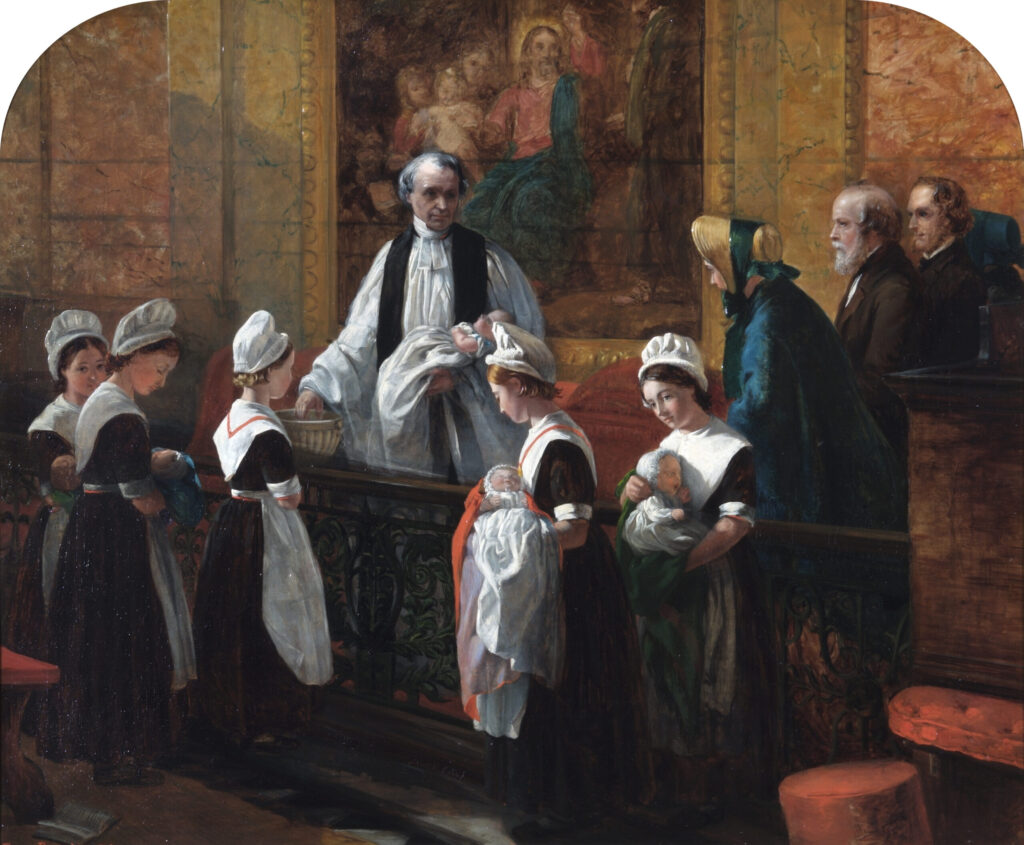Throughout our history, Coram has inspired art and artists alike.
The artist William Hogarth was involved with the Foundling Hospital from the early days, and was a founding governor. The Foundling Hospital Art Collection was England’s first public gallery which attracted a daily crowd of spectators and raised valuable funds for the children. It was created thanks to Hogarth, who donated many art works to the Foundling Hospital and encouraged leading artists of the time, such as Thomas Gainsborough and Sir Joshua Reynolds, to do the same. Many of the works were displayed in the Hospital dining room, so that the children could benefit from them. The collection included Hogarth’s portrait of Thomas Coram, which is on display in the Foundling Museum.
Victorian era artist Emma Brownlow King is best known for her detailed paintings depicting everyday scenes from the Foundling Hospital. The daughter of John Brownlow, a foundling who had been brought up in the Hospital, she donated four paintings to be displayed covering topics from The Sick Room to The Christening.

Emma Brownlow, The Christening, 1863 © Coram in the care of the Foundling Museum
The Foundling Hospital Art Collection, owned by Coram, was retained through the years in the Hospital buildings and headquarters until 1998, when the charity decided that these items would be best preserved and cared for by establishing a separate museum charity, the Foundling Museum. The Collection is currently in the care of the Foundling Museum and includes paintings, drawings, prints and sculptures created and donated by Hogarth and others. The Foundling Museum is also responsible for the care and maintenance of the Gerald Coke Handel Collection, an internationally important library and archive relating to Handel and his musical contemporaries.
The works of art can be seen today at the Foundling Museum, which also includes the original 18th-century interiors from the Foundling Hospital. When the Hospital was demolished in 1926 and relocated outside of London, the Committee Room, Court Room, Picture Gallery and staircase were reconstructed in what was the charity’s London headquarters and is now the museum. Plasterwork, fireplaces, furniture and clocks, made for and donated to the Hospital by leading craftsmen of the day can also be seen.
The Museum also has a programme of changing exhibitions and displays, which are often inspired by responses from contemporary artists to our collection and story, and are shown alongside collection objects.
More recently, artists including Tracey Emin, Grayson Perry and Cornelia Parker have created work inspired by stories of Foundling pupils and loss and separation.

